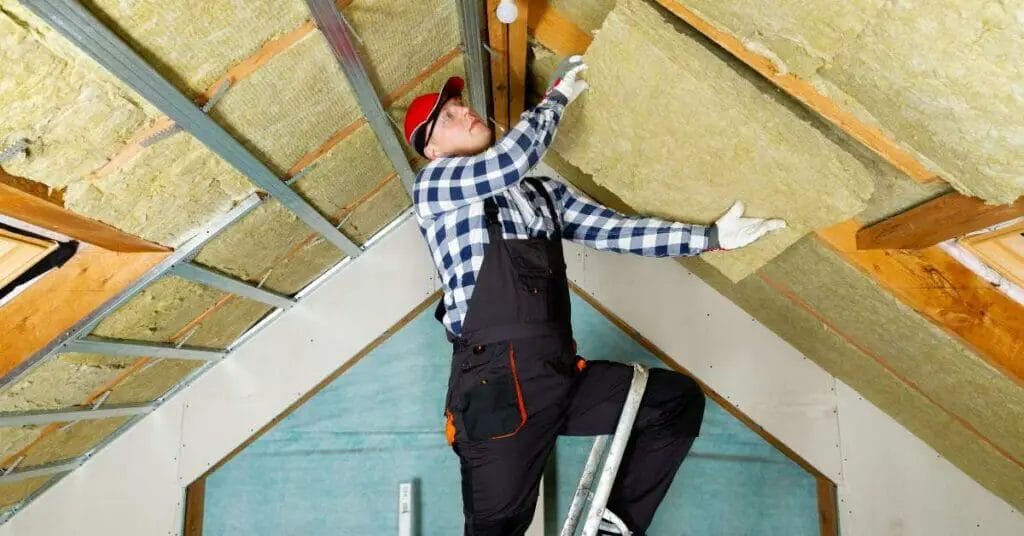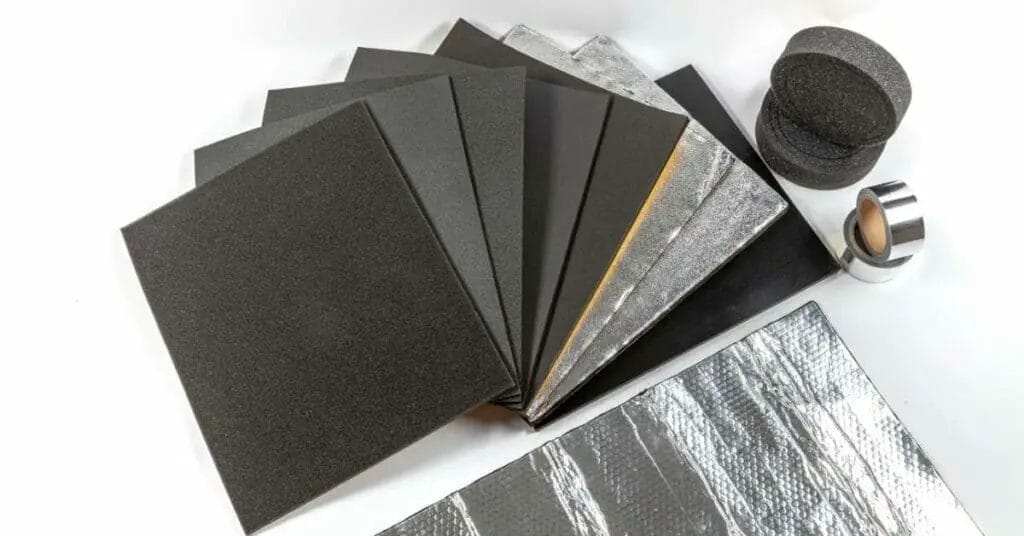Exposure to constant noise is detrimental to your mental health and overall well-being.

If you are tired of dealing with unwanted noise seeping into your home or office you may have considered sound insulation as a solution. But before investing in soundproofing materials, it’s important to understand their effectiveness.
One question that often arises is whether sound insulation has an R value, similar to how thermal insulation is rated.
The R value is a measurement used to determine the thermal resistance of a material. While sound insulation doesn’t have a direct R value, it does have its own rating system known as the Sound Transmission Class (STC).
In this article, we will explore the concept of sound insulation, its effectiveness in reducing noise, and how the STC rating can guide you in selecting the right materials for your soundproofing needs.
So, if you’re ready to reclaim your peace and quiet, let’s dive into the world of sound insulation and discover how it can make a difference in your space.

Understanding sound insulation
Sound insulation is the process of reducing or blocking sound transmission from one area to another. It involves using materials that absorb, reflects, or dampen sound waves, preventing them from traveling through walls, floors, or ceilings.
By creating a barrier, sound insulation helps to minimize noise transfer, providing a quieter and more peaceful environment.
What is an R value?
The R value, or thermal resistance, is a measurement used to determine how well a material can resist heat flow. It is commonly used to assess the effectiveness of thermal insulation in buildings.
The higher the R value, the better the material is at preventing heat transfer.
However, when it comes to sound insulation, there is no direct correlation to the R value. While both thermal and sound insulation aims to reduce energy transfer, they operate on different principles.
Thermal insulation focuses on preventing heat flow, whereas sound insulation targets sound waves and vibrations.
The difference between R value and sound transmission class (STC)
Instead of an R value, sound insulation is rated using the Sound Transmission Class (STC).
The STC rating measures how well a material can reduce sound transmission through a partition, such as a wall or floor. It is determined by conducting laboratory tests that measure the sound insulation properties of the material across a range of frequencies.
The STC rating scale ranges from 0 to 100, with higher numbers indicating better sound insulation.
For example, a typical interior wall without insulation may have an STC rating of around 30, while a high-quality soundproof wall can have an STC rating of 60 or higher.
It’s important to note that the STC rating is an average value across various frequencies, and it doesn’t provide detailed information about the specific sound frequencies that are blocked or attenuated.
Factors that affect sound insulation
Several factors can affect the effectiveness of sound insulation.
These include the thickness and density of the insulation material, the construction of the partition, and the presence of any air gaps or flanking paths.
Thicker and denser materials are generally more effective at reducing sound transmission, as they absorb and dampen sound waves more effectively.
Additionally, partitions that are well-sealed and free from gaps or cracks can provide better sound insulation.
It’s also important to consider the frequency range of the noise you’re trying to block. Different materials have varying absorption and reflection properties across different frequencies.
For example, low-frequency sounds, such as bass, are more challenging to block compared to high-frequency sounds like voices.
Therefore, it’s crucial to choose sound insulation materials that are specifically designed to address the frequency range of the noise you want to reduce.
The importance of proper installation for sound insulation effectiveness
While selecting the right sound insulation materials is essential, proper installation is equally important for optimal effectiveness.
Even the highest-quality materials can underperform if they are not installed correctly. Gaps, cracks, or poorly sealed edges can compromise the sound barrier and allow sound waves to leak through.
Therefore, it’s crucial to follow the manufacturer’s guidelines and ensure a proper installation to maximize the benefits of sound insulation.
Common misconceptions about sound insulation and R value
There is a common misconception that sound insulation can be measured using an R value, similar to thermal insulation.
However, as previously mentioned, the R value is not applicable to sound insulation.
This misconception may arise from the fact that both thermal and sound insulation aims to reduce energy transfer, but they operate on different principles.
It’s important to understand this distinction to make informed decisions when selecting insulation materials.
Sound insulation products with high R values
Although sound insulation doesn’t have an R value, some products combine both thermal and sound insulation properties.
These products are designed to provide both energy efficiency and noise reduction benefits. They are often labeled with an R value to indicate their thermal insulation capabilities.
However, it’s important to note that the R value indicated on these products is only relevant to thermal insulation and doesn’t reflect their soundproofing performance.
If your primary concern is sound insulation, it’s recommended to focus on the STC rating rather than the R value when selecting materials.

How to choose the right sound insulation for your needs
When choosing sound insulation materials, it’s important to consider your specific needs and requirements.
Start by assessing the noise sources and identifying the areas where sound insulation is most needed.
For example, if you’re dealing with noisy neighbors, focusing on wall insulation might be a priority.
On the other hand, if you’re trying to reduce the impact of footsteps or airborne noise, floor or ceiling insulation might be more important.
Next, consider the STC rating of the materials you’re considering.
Aim for materials with higher STC ratings, as they will provide better sound insulation.
Additionally, look for materials that are specifically designed to address the frequency range of the noise you want to reduce.
For example, if you’re dealing with low-frequency noise, consider materials that have good low-frequency sound absorption properties.
Finally, consult with professionals or experts in the field to get personalized recommendations based on your specific situation.
They can help you assess your needs, evaluate different materials, and ensure proper installation for optimal sound insulation performance.
Additional considerations for sound insulation in specific areas
While the principles of sound insulation apply to various areas, there are some specific considerations to keep in mind for different spaces.
For example, when insulating walls, it’s important to consider the construction of the wall, the presence of air gaps, and the potential for flanking paths.
Adding insulation to existing walls may require different techniques compared to new construction.
Similarly, insulating floors and ceilings may involve addressing both airborne and impact noise. In these areas, it’s important to select materials that can effectively reduce both types of noise.
Moreover, proper installation techniques, such as using resilient channels or sound-isolating clips, can enhance the sound insulation performance in these areas.